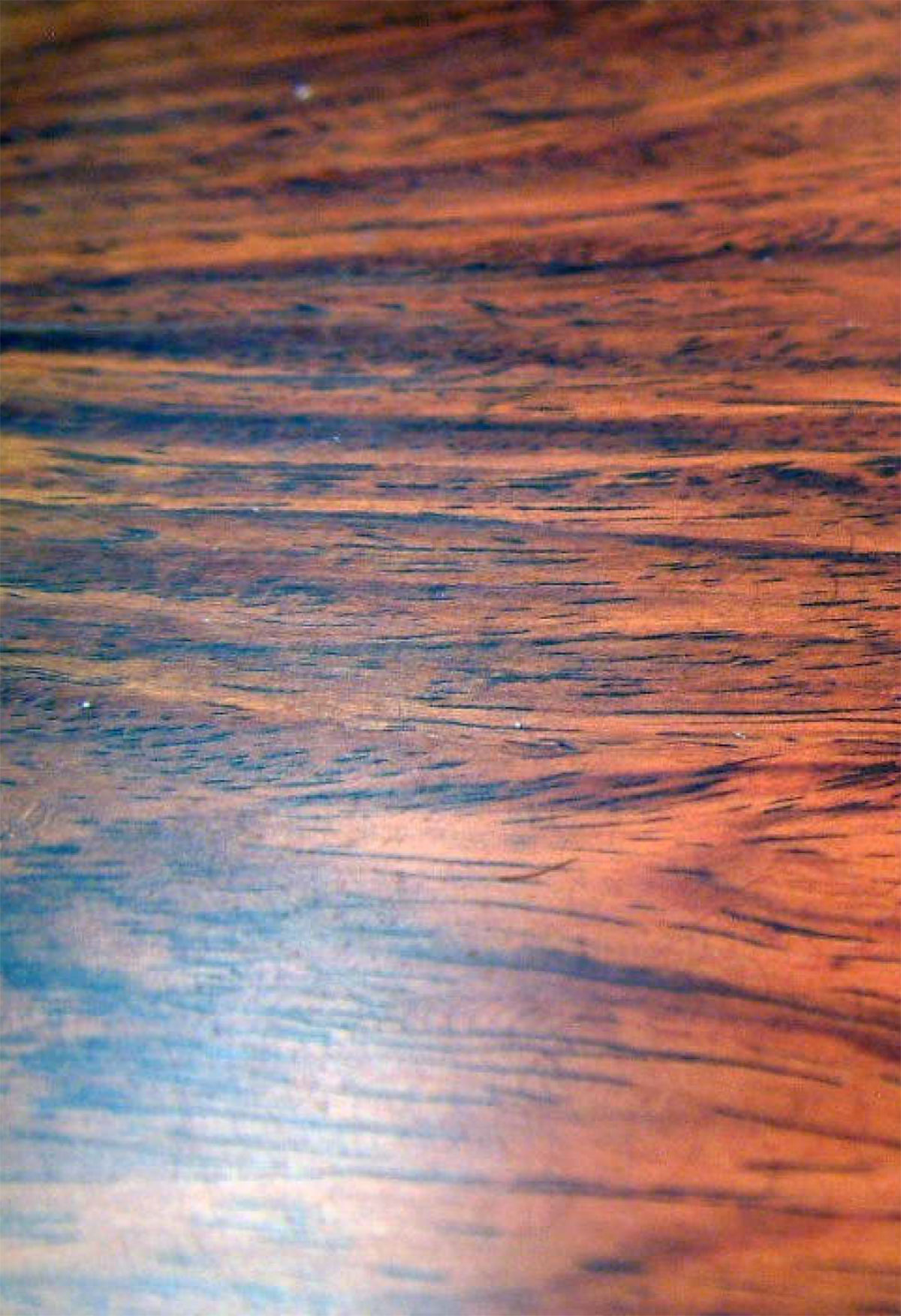

Rosewood is a hard, fragrant timber from the Southeast Asian Pterocarpus Indicus tree (pronounced: ter-oh-kar-pus). The heartwood is naturally resistant to decay and to attack by termites, and can reach a height of 30 meters. A pinkish wood with finely peppered grain, rosewood is highly prized for its: hardness, heaviness, wear resistance and its shaping to polishing, carving, mortising and finishing. Rosewood is well suited for cabinetmaking and fine woodworking. Finished furniture appears slender, but is naturally strong and heavy due to these ideal traits.
The color of rosewood's heartwood ranges from blood orange, golden brown, yellow, reddish brown, to a pink red. It darkens upon exposure and the patina darkens with age. The grain is typically interlocked and wavy, marked with pronounced twisted knots. Flat sawn surfaces have a flame figure; quartersawn surfaces exhibit a ribbon fugure.
All-wood joinery is proven against the test of time with a sophisticated system of joinery perfected in the Ming Dynasty (1368-1644). One member is joined to the other in an equal fashion to create furniture, art, representing a totality of form, function, and balance.
The "floating panels" in mortise-and-tenon frames allow the wood to move without cracking, splitting or affecting the structural integrity. Such joinery techniques allow the wood to breath, flex as a structure, adapting to weatherand climate variations that force solid wood to expand and contract.
To this day, Ming Dynasty furniture are featured in permanent exhibitions at the finest museums such as: San Francisco's Asian Art Museum, New York's Metropolitan Museum of Art, Philadelphia's Museum of Art, Massachussets' Peabody Essex Museum, Shanghai's Museum, and Taiwan's National Palace Museum.